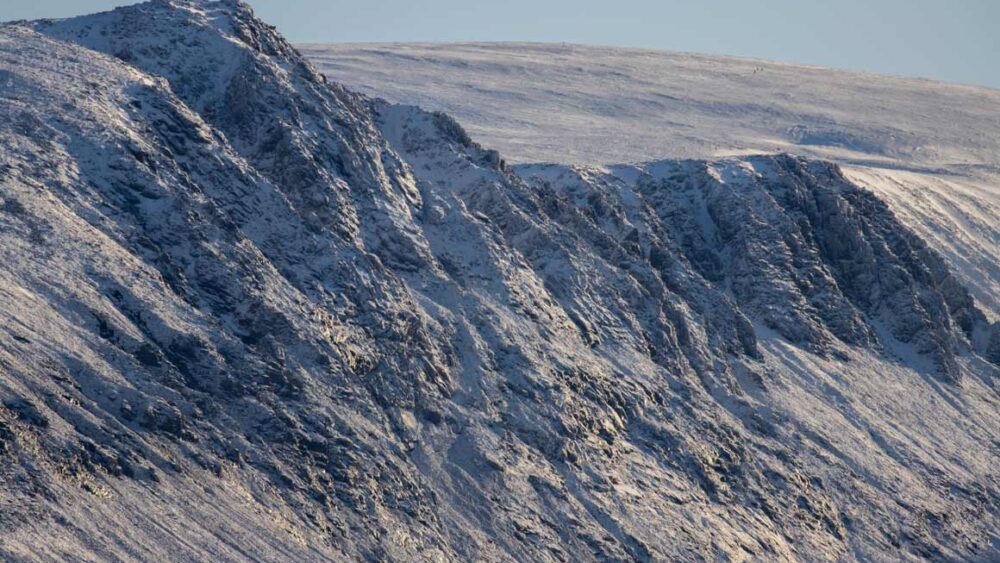As the world looks to the two-week “COP-26” climate change conference in Glasgow, Scotland, a critical aspect is missing from the main story lines – the potential for catastrophic, possibly abrupt higher global sea level starting this century. The world looks to the Intergovernmental Panel on Climate Change (IPCC) for guidance on sea level rise in order to make a multitude of decisions to sustain coastal communities. In its latest report, the IPCC’s primary projection still shows only two to three feet of sea level rise (roughly a meter) by 2100. Those projections may be low and dangerously misleading due to the towering unstable ice cliffs on Antarctica, which should loom large for those meeting in Glasgow this week.
What happens to sea level largely depends on the two giant ice sheets, on Antarctica and Greenland. Combined they hold more than two hundred feet of potential sea level rise. They are melting faster by the decade. In just the last thirty years the rate of ice melt and rising seas has tripled, showing signs of exponential acceleration.
This is not the first-time sea level has risen exponentially, even though for the past six thousand years sea level has been stable. That stability hid the historical reality that sea level changes dramatically. Consider that just 11,000 years ago as the ice sheets melted from the last ice age, sea level climbed vertically almost four hundred feet, with peak rates of rise more than fifteen feet per century. Although these changes were due to natural cycles mankind has now disrupted these cycles potentially accelerating them by putting massive unnatural amounts of greenhouse gases into the atmosphere causing temperatures to rise and oceans to warm.
A key question is how the towering ice cliffs on the edges of Antarctica will become unstable as temperatures warm. The calving face of giant glaciers such as Thwaites can be nearly two miles high. As they collapse, melt, and calve into new giant icebergs, they will raise sea levels significantly. Surprisingly, glaciers and ice sheets defy precise modeling and prediction, similar to our inability to forecast earthquakes, avalanches, and mudslides. The recent IPCC report notes that ice cliff instability could effectively double sea level rise by 2100. However, the inability to determine a precise probability and magnitude, caused them to exclude that risk from their featured conclusions. Thus, the IPCC’s rigorous protocol avoids pointing to the significant possibility of as much as two meters (approximately seven feet) of sea level rise by 2100.
It is critical to realize that even a few feet of global sea level rise represents a monstrous challenge for coastal communities around the world. For every foot of higher sea level, coastlines can move inland hundreds of feet. One hundred and forty nations have an ocean coastline. Many thousands of communities are threatened by just a meter (approximately three feet) of sea level rise. That increase alone would displace tens of millions of people from Miami to Venice and Shanghai to Bangladesh creating a humanitarian crisis the world has never seen. Today we are seeing that even with simply a few inches of higher base sea level, the impacts from short term flooding events from storms, extreme tides, and increasing record rainfall are much worse.
The fundamental question facing the delegates in Glasgow is whether they will they adopt aggressive ambitious measures to reduce greenhouse gas emissions to keep the warming to less than two degrees Celsius (3.6 degrees Fahrenheit) this century. Though meeting that goal would be historic, delegates must remember that even that would not put an end to rising global sea level. We’ve passed a tipping point, rising sea levels will not stop for centuries due to the heat we’ve already added to the oceans. However, it is critical that the world begins to slow the warming to prevent even greater increases in the acceleration of sea level rise.
The ominous risk of Antarctic ice cliff instability can be one factor to help COP-26 delegates make bold commitments to slow the warming. We must begin adapting to the rising seas as an urgent priority looking ahead to mid-century and beyond. Design, engineering, and construction needs to include a margin of safety to allow for the uncertain rate of rise. If we don’t slow the warming and begin adapting now, the humanitarian, national security, and economic impacts will be staggering.
Glasgow needs to be the pivot point where the global community radically changes course and dramatically steps up both collective greenhouse gas reduction and sea level rise adaptation measures. The greenhouse emissions goals of two degrees Celsius this century set at the 2015 Paris Climate Agreement will not stop the melting but would buy time for the world to adapt in a more manageable way. We urge the delegates in Glasgow to keep to those goals and remember the towering Antarctic ice cliffs, taking decisive action to slow the warming.
OP-ED by John Englander and Robert W. Corell,
Co-founders: Rising Seas Institute www.risingseasinstitute.org

Comments are closed.